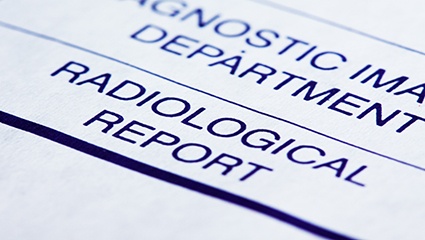In an article published in the online Journal of the American College of Radiology1, authors from Duke University Medical Center Department of Radiology present a study conducted to demonstrate the variability and complexity of radiologists’ dictated notes. The authors chose to analyze the language used to describe normal thyroid glands in chest CT reports as a “surrogate for the broader readability of radiology reports”. In a sample of nearly seven thousand non-contrast chest CT reports, the researchers found 342 unique sentences or phrases describing a normal thyroid gland. Furthermore, linguistic analysis suggested that descriptors for a normal thyroid gland require an advanced college-level education for comprehension. This text is well above the national average health literacy level and results in reports that are difficult for patients to understand.2
Helping Our Computers Help Us: Standardizing Radiology Reporting to Benefit from Emerging Technologies on June 7, 2018
Categories: radiology documentation, radiology, structured reporting, artificial intelligence
New Study Shows Structured Reporting is Preferred by Clinicians on March 27, 2018
A recent study[1] published by the Journal of the American College of Radiology concludes that clinicians prefer radiology reports in a more structured format over those in a “more traditional, prose style”. This finding supports the position we at Healthcare Administrative Partners have long advocated. Our May 2016 article points out the many benefits of structured reporting, which include easier transition to clinical decision support systems, compliance with quality reporting standards, and fewer denials from payers for questions of medical necessity or coding at the appropriate level of service.
Categories: radiology, structured reporting





